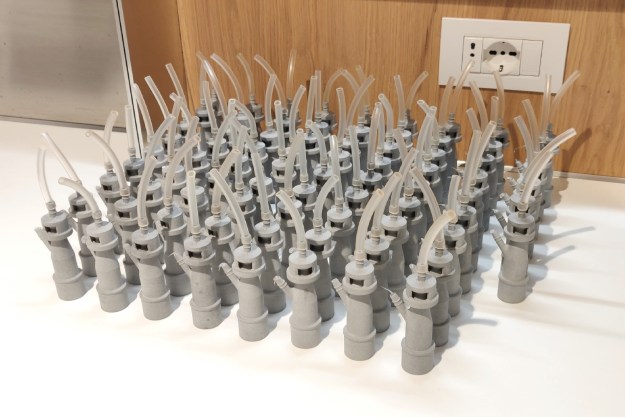 Maybe the reason that you haven’t jumped onto the oft-reported trend of 3D printing is because you’re worried about the technology. After all, if you can print solid objects that work in three dimensional space, the possibilities seem endless – and those come with a huge responsibility. What if you make a mistake in your designs, and what you had intended to be a table ends up as some kind of arcane killing device? Maybe you were trying to make something relatively innocuous like a shoe, but end up adding in a trigger, targeting scope, and place to insert bullets? Well, that last worry is a thing of the past, thanks to a 3D printer company that has invented a “firearm component detection algorithm.”
Maybe the reason that you haven’t jumped onto the oft-reported trend of 3D printing is because you’re worried about the technology. After all, if you can print solid objects that work in three dimensional space, the possibilities seem endless – and those come with a huge responsibility. What if you make a mistake in your designs, and what you had intended to be a table ends up as some kind of arcane killing device? Maybe you were trying to make something relatively innocuous like a shoe, but end up adding in a trigger, targeting scope, and place to insert bullets? Well, that last worry is a thing of the past, thanks to a 3D printer company that has invented a “firearm component detection algorithm.”
According to a press release by Danish company Create It REAL, the company’s new software will “prevent 3D printing of guns” by recognizing not designs for specific guns, but instead specific components that would be used in the construction of the firearms.
“There have been debates in the media on how to stop people from printing guns on their 3D printers,” the release explains. “Banning the technology would mean a huge regression towards what The Economist called the ‘third industrial revolution,'” the release continues, adding that “Banning the files which contain the 3D information of a gun does not seem to be possible in the times of digital file sharing.”
Instead, the company announced, it has created “smart software” that “upon opening a 3D file… scans the model and tries to match its characteristics with the characteristics of a firearm. If certain features align, the software will not allow the user to view and print the model.”
There are, of course, some obvious drawbacks to this model of 3D printing control (or censorship, as a harsh way to put it). For one, it relies upon specific characteristics of a weapon to be present before the design gets blocked, which is a somewhat scattershot – pun only slightly intended – way to go about things. What if someone designed a 3D printer gun that lacked traditional characteristics? Or, on the flip side, what about other non-gun objects that may match the characteristics by accident? Will those objects be similarly blocked by the software? For what it’s worth, Create It REAL CEO Jérémie Pierre Gay said that “printing other, non-firearm models is of course still possible.”
The new software is, at best, a well-meaning development that could give concerned parties some relief. Whether it can truly prevent someone determined to make their own 3D-printed gun is less obvious. After all, the only way around this barrier is to use a printer that doesn’t already have this software pre-installed.
Editors' Recommendations
- 3DMakerpro’s Seal is a pocket-sized scanner to make next-gen precision 3D prints
- Need a last-minute Halloween costume? Check out these 3D-printable getups
- The best 3D printers under $500
- Inside the quest to 3D print a perfectly palatable steak
- 3D printing lets hospitals make ventilator substitutes with common equipment


